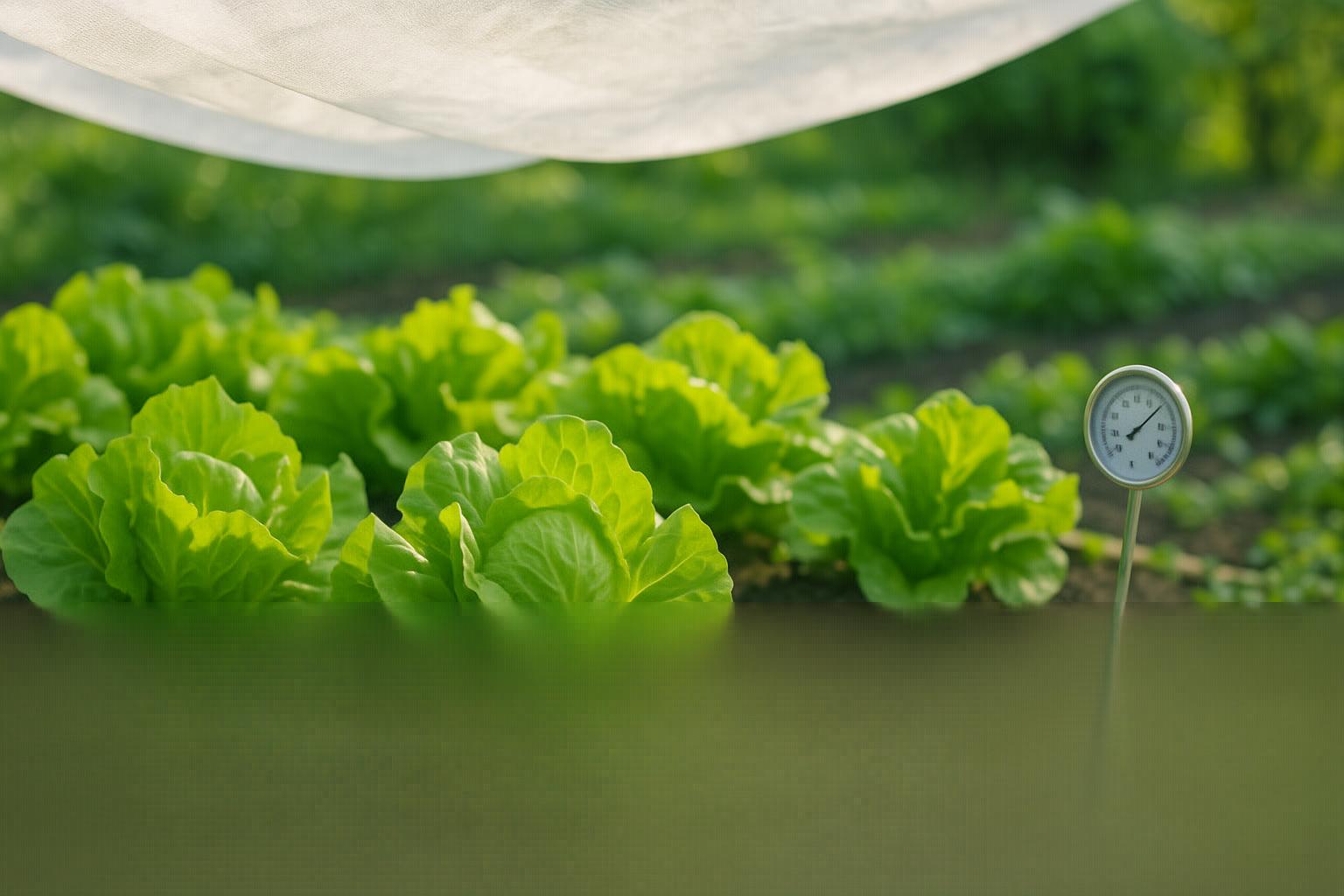Introduction to Lettuce and Its Temperature Needs
Wondering about the ideal temperature for lettuce? If so, you’re already on track to growing crisp, flavorful leaves in your garden. Temperature plays a vital role in every stage of lettuce cultivation, from seed germination to harvest. Lettuce thrives in cooler weather, and even a slight rise or fall in temperature can impact its growth—sometimes drastically. For example, when daytime temperatures climb too high, lettuce plants can bolt, sending up flower stalks prematurely. This not only shortens your harvest window but also turns once tender leaves bitter and tough.
Because lettuce is so sensitive to heat stress, getting the temperature right can mean the difference between a fresh, sweet salad and a disappointing, inedible crop. Soil and air temperatures that are too warm can also make seeds reluctant to sprout, slowing down your gardening efforts right from the start. On the other hand, freezing weather may stunt or kill young seedlings.
Knowing these challenges, gardeners and commercial growers have learned some practical strategies. Simple solutions—like planting in early spring or late summer, using shade cloth during heatwaves, or even growing lettuce indoors—can maintain the ideal temperature for lettuce and keep your greens sweet and abundant. In this post, we’ll break down the exact temperatures your lettuce needs at each stage, identify warning signs of temperature stress, and share proven tips for keeping your plants comfortable throughout the season.
Optimal Temperature Range for Lettuce Growth
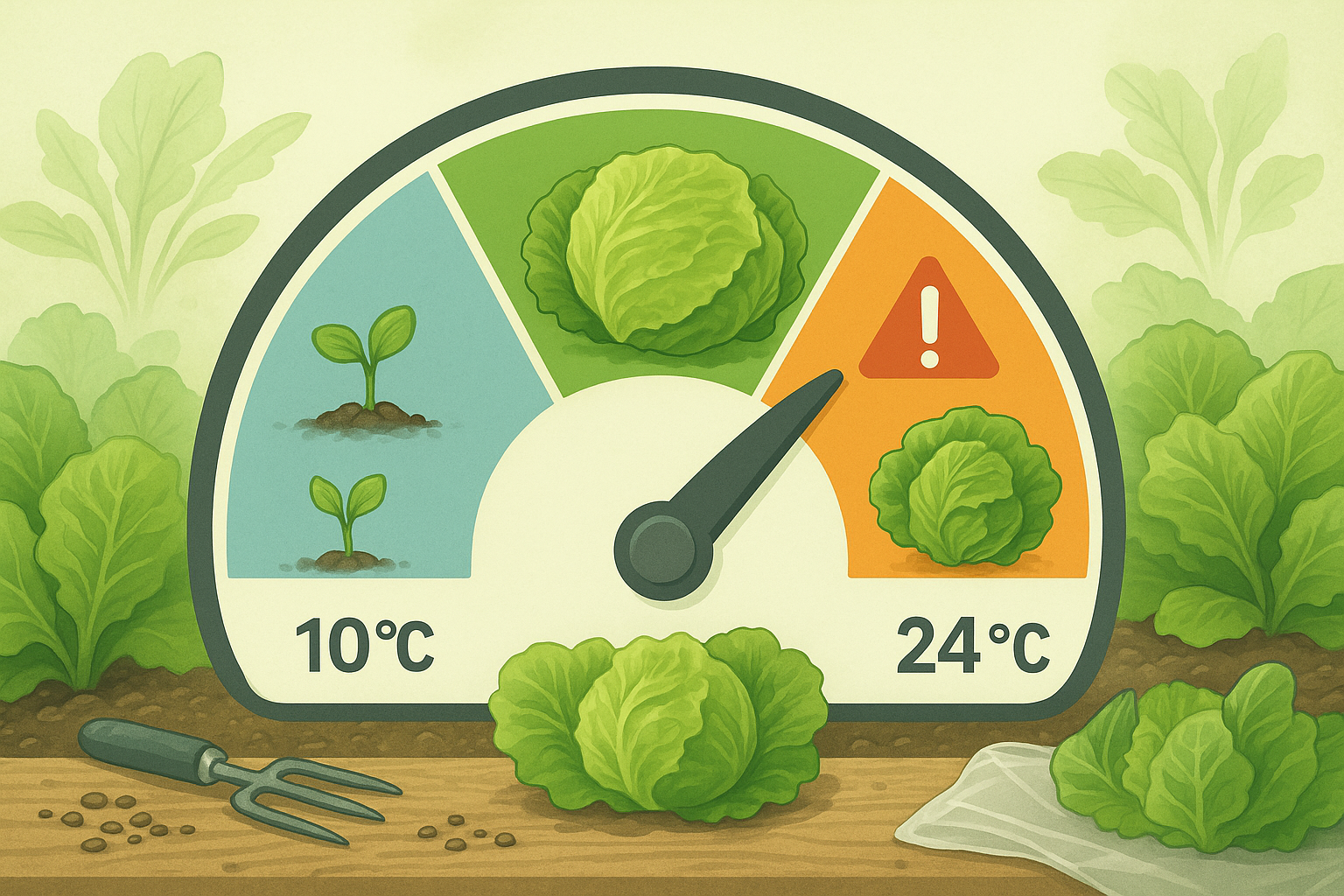
Lettuce thrives within a relatively narrow temperature range, making careful climate management crucial for healthy growth. For seed germination, the optimal soil temperature typically falls between 16°C and 22°C (60°F to 72°F). Within this window, lettuce seeds sprout quickly and develop robust root systems.
Once the plants have germinated, the ideal air temperature for young and mature lettuce ranges from 15°C to 20°C (59°F to 68°F) during the day and slightly cooler, around 10°C to 15°C (50°F to 59°F) at night. Daytime warmth encourages rapid, leafy growth, while cooler nights help reduce plant stress and prevent bolting, which is when the plant starts to flower prematurely.
If daytime temperatures consistently climb above 24°C (75°F), lettuce is prone to bolting and developing a bitter flavor, making it less appealing for the table. Conversely, prolonged exposure to temperatures below 7°C (44°F) can slow growth dramatically and may cause leaf damage or even plant death, particularly if hard frosts occur.
Gardeners looking to avoid these pitfalls might try:
- Planting lettuce in early spring or late summer
- Using shade cloth and mulch during heatwaves to keep soils cool
In hot climates, some growers succeed by switching to bolt-resistant lettuce cultivars or using containers to move plants into a cooler microclimate. For those facing early frosts, season extenders like row covers can help protect tender seedlings.
By closely monitoring and managing temperature, lettuce growers can ensure a steady harvest of crisp, flavorful leaves, even when weather conditions are less than ideal—ultimately taking much of the guesswork out of growing this notoriously finicky vegetable.
Choosing the Right Lettuce Varieties for Your Climate
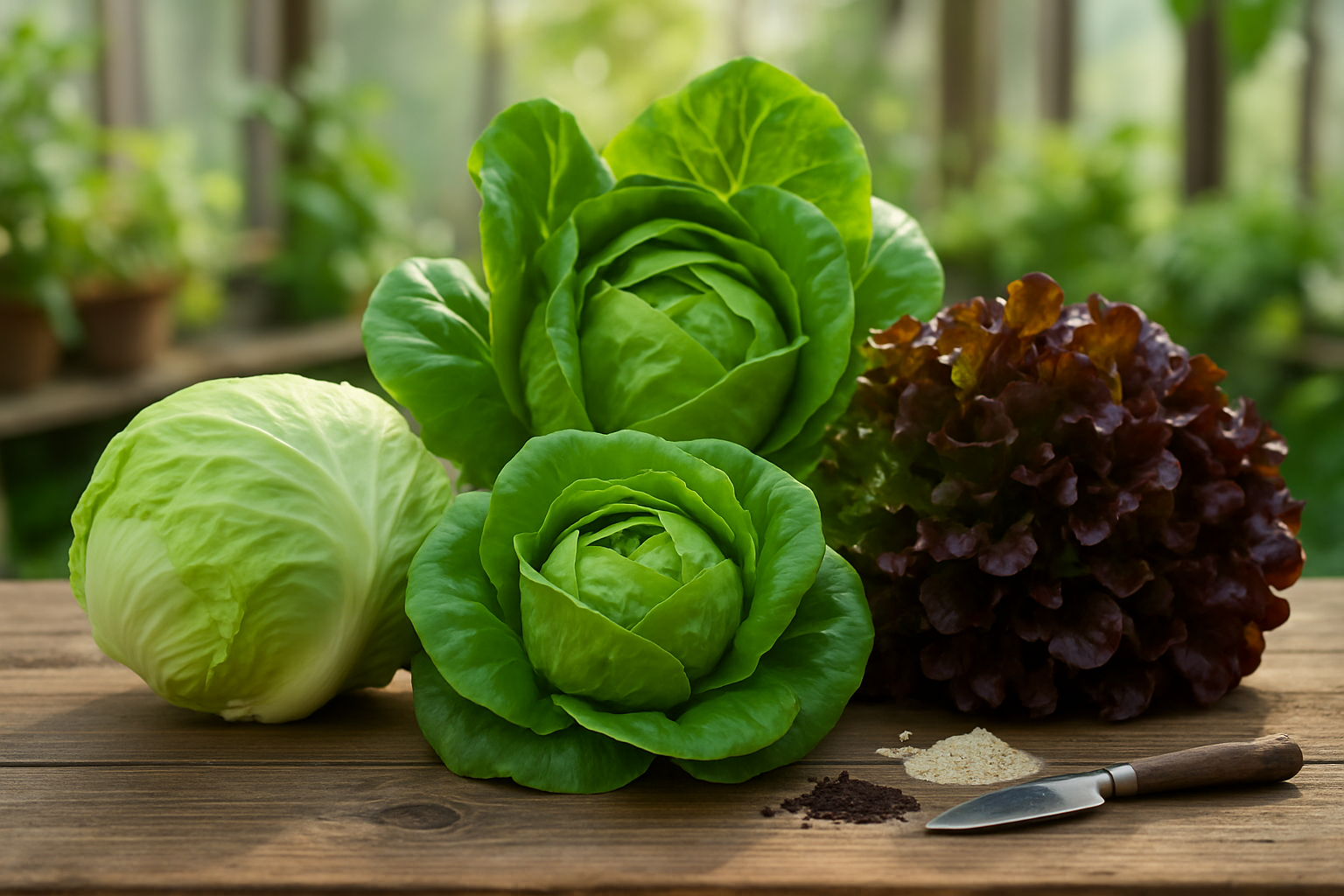
When planning your lettuce garden, it’s essential to match the right lettuce variety to your climate for the best yield and flavor. Lettuce types differ widely in their tolerance to temperature swings.
Crisphead lettuces, like iceberg, prefer cooler weather and tend to bolt or become bitter quickly if exposed to heat, making them best for early spring or fall planting in most regions. Romaine varieties, such as ‘Parris Island Cos,’ are a bit more heat-tolerant and can handle slightly warmer days but still thrive when night temperatures are cool.
Butterhead types, including ‘Buttercrunch’ and ‘Boston,’ fall in the middle with moderate heat and cold tolerance, providing versatility for milder climates or those with unpredictable spring weather. Leaf lettuces—such as ‘Black Seeded Simpson’ or ‘Red Sails’—are the easiest to grow and generally the most adaptable, with many varieties bred for extra resistance to heat or cold. For example, ‘Jericho’ is known for its extraordinary heat tolerance, while ‘Winter Density’ is prized for cold-hardiness.
To choose the right types for your area, check your local average temperatures during the expected growing season and look for varieties described as “bolt-resistant” for warm climates or “frost-tolerant” for cooler regions. Many gardeners also stagger plantings or start lettuce indoors to extend the harvest period.
Consulting local extension services or experienced gardeners in your area can provide valuable, climate-specific advice to ensure your lettuce thrives all season long.
Timing Your Lettuce Planting for Success
Timing is everything when it comes to growing tender, flavorful lettuce. Understanding your region’s temperature trends is key to planning successful crops throughout the year. Lettuce seeds germinate best when soil temperatures are between 40°F and 75°F, making early spring the perfect window to start sowing as soon as the ground is workable.
In most climates, this means planting roughly 2-4 weeks before your average last frost. Keep an eye on local forecasts and use a soil thermometer to gauge conditions. For summer lettuce, choose heat-tolerant varieties and provide afternoon shade or plant in cooler microclimates, because seeds tend to struggle with germination and plants can bolt once soil temperatures climb above 75°F.
As summer’s end approaches, you can get a final crop by starting seeds in late summer to early fall, aiming to plant 8-10 weeks before your region’s first expected frost. In warmer zones, fall may actually be the best season for long-lasting, tender lettuce.
To extend your harvest window, try succession planting: sow a new row every 10-14 days. This simple trick keeps your salad bowl full for weeks, avoids feast-or-famine harvests, and ensures you always have crisp, young leaves at their prime. For extra success, stagger plantings between quick-growing loose-leaf types and slower-developing romaines or butterheads.
With just a bit of planning and attention to soil temperature, you’ll enjoy a continuous supply of homegrown lettuce in nearly any season.
Managing Temperature Challenges
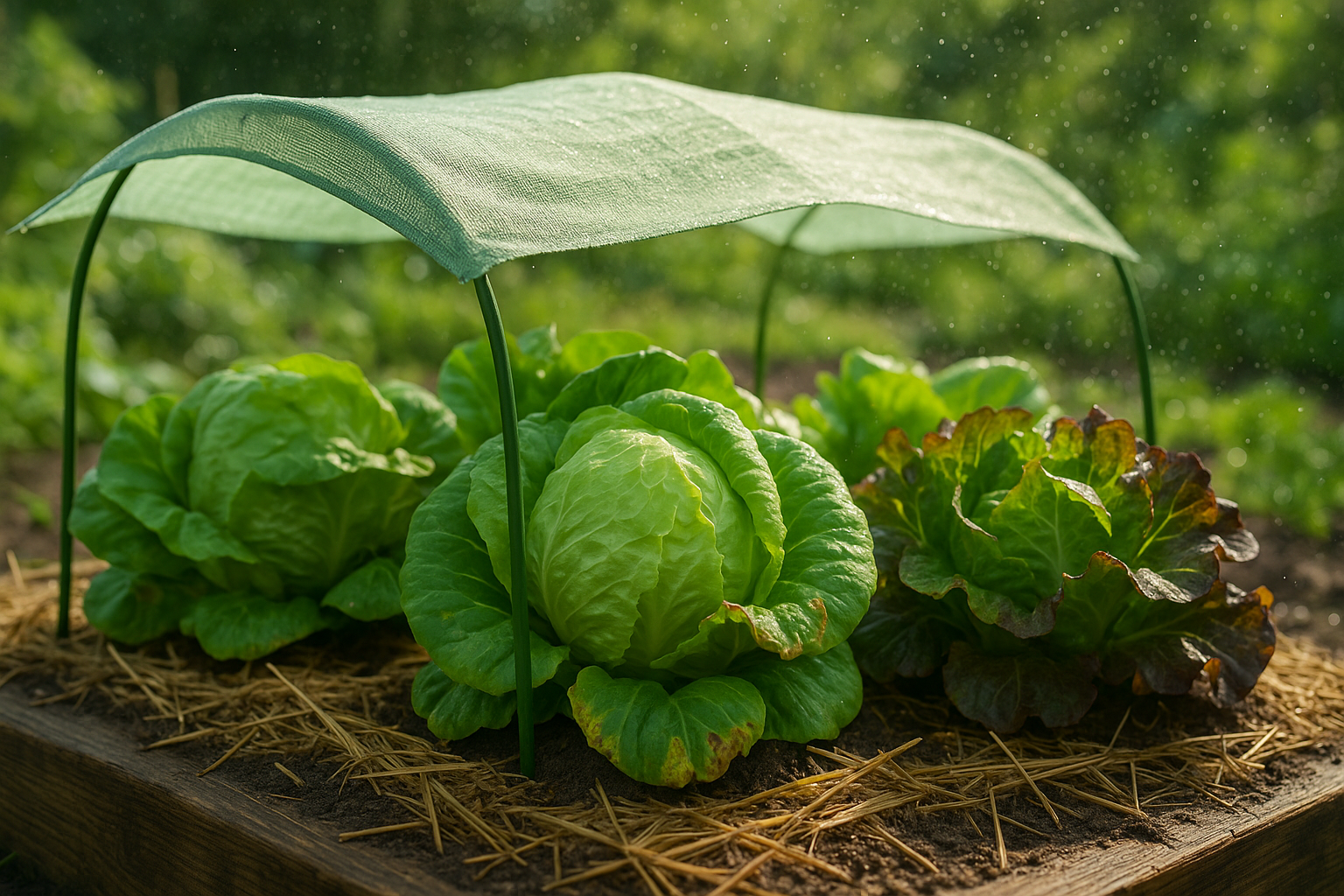
Growing healthy lettuce can be tricky when temperatures swing to extremes, but with a few smart strategies, you can keep your plants thriving.
Dealing with Hot Weather
In hot weather, lettuce tends to bolt (go to seed) quickly or develop bitter leaves, so protection is key. Use a light shade cloth during the hottest part of the day—this simple step can lower leaf temperatures by several degrees and prevent scorch. Applying a thick layer of organic mulch, like straw or shredded leaves, helps keep the soil cool and retains moisture, reducing heat stress. Water early in the morning or late afternoon to minimize evaporation and encourage deep roots.
Signs of heat stress include wilting, tip burn, and rapid elongation of leaves. If you notice these, add extra shade and ensure the soil stays consistently moist but not soggy.
Tackling Cold Weather
On the flip side, lettuce doesn’t love the cold either, but you have options if you want to extend your season. Cold frames or low tunnels made with clear plastic can trap warmth and protect your crop from frost, acting like miniature greenhouses. Floating row covers are lightweight and easy to drape directly over plants, shielding them from chilly winds.
For overwintering, choose hardy lettuce varieties and plant them in the warmest microclimate of your garden, such as next to a south-facing wall. Cold-stressed lettuce may show slow growth, yellowing leaves, or a glassy, almost translucent appearance.
To remedy cold damage, add an extra layer to your covers, avoid overwatering (since roots take up less water in the cold), and harvest outer leaves quickly if frost is approaching.
With a little planning, you can keep lettuce growing strong in almost any weather.
Harvesting and Post-Harvest Practices in Relation to Temperature
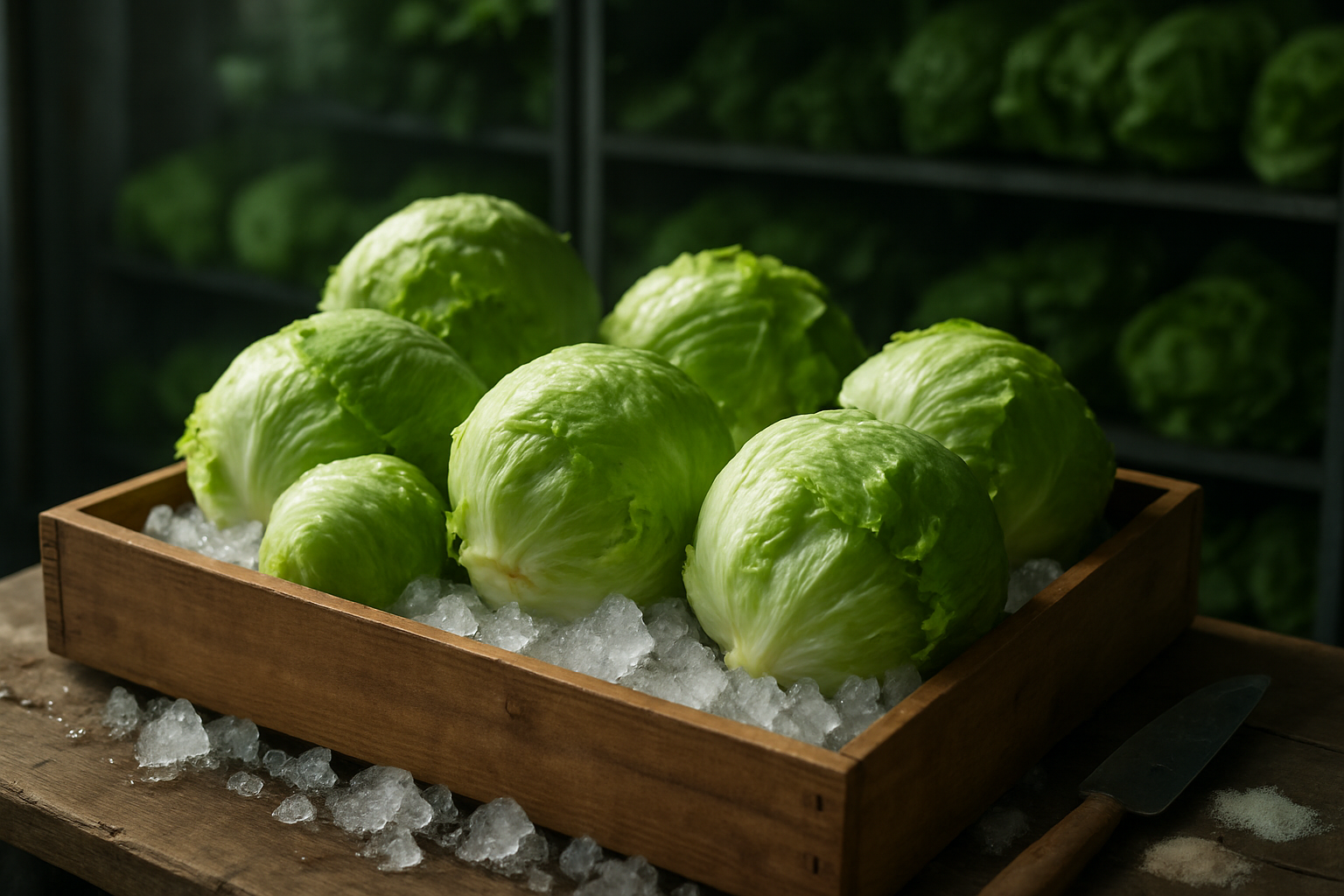
Temperature plays a crucial role in determining the best time to harvest lettuce and directly impacts its quality. Warmer temperatures accelerate lettuce growth but can also lead to quicker bolting, reduced leaf tenderness, and a bitter taste if harvesting is delayed. Conversely, cooler conditions slow lettuce maturation, allowing leaves to develop better texture and sweetness. However, waiting too long in the cold can cause frost damage or reduced yield if cold snaps occur.
To optimize quality, lettuce should be harvested early in the morning when field temperatures are lowest and the leaves are crisp and full of moisture. In warm climates, it’s especially important to move harvested heads promptly into the shade and cool them as soon as possible. Placing them in cool water or transporting them to a refrigerated environment helps prevent wilting and spoilage. Using clean, sharp knives reduces plant damage and the risk of disease.
After harvest, proper handling is essential. Immediately removing field heat by hydro-cooling or forced-air chilling considerably extends shelf life. Store lettuce at temperatures between 0–2°C (32–36°F) with high humidity to retain crispness. For home gardeners, a simple cooler filled with ice packs can mimic commercial cooling methods on a small scale. Always avoid stacking heads too tightly, as good airflow prevents the buildup of excess moisture and discourages rot.
By understanding and responding to temperature’s effects and handling lettuce gently and swiftly, both home gardeners and commercial growers can deliver crisp, flavorful greens with maximum shelf life.
Common Questions and Troubleshooting Lettuce Temperature Issues
Lettuce is sensitive to temperature changes, and problems like tip burn, bolting, and stunted growth are common for both beginner and experienced gardeners. Tip burn often occurs when days are hot but nights remain cool. To prevent leaf edges from browning, try to water consistently, provide shade during peak sun hours, and choose heat-resistant lettuce varieties.
Bolting—when lettuce suddenly grows tall and flowers—is usually triggered by high temperatures or long daylight hours. To avoid this, plant lettuce early in spring or fall, and use shade cloths if a heat wave is expected.
If your lettuce isn’t growing well, the temperature might be too low, as growth slows dramatically below 45°F (7°C). Try starting seeds indoors, using row covers, or positioning your garden where it catches morning sunlight.
Consistent moisture is key, but be sure to avoid saturated soil to prevent root rot.
For answers to specific questions, check resources like university extension offices (such as the UC Davis Vegetable Research and Information Center), gardening forums, and the Johnny’s Selected Seeds Grower’s Library. These offer detailed, practical guidance tailored to your local climate and lettuce variety.
With a little care, you can solve most temperature-related issues and grow crisp, healthy lettuce all season long.
